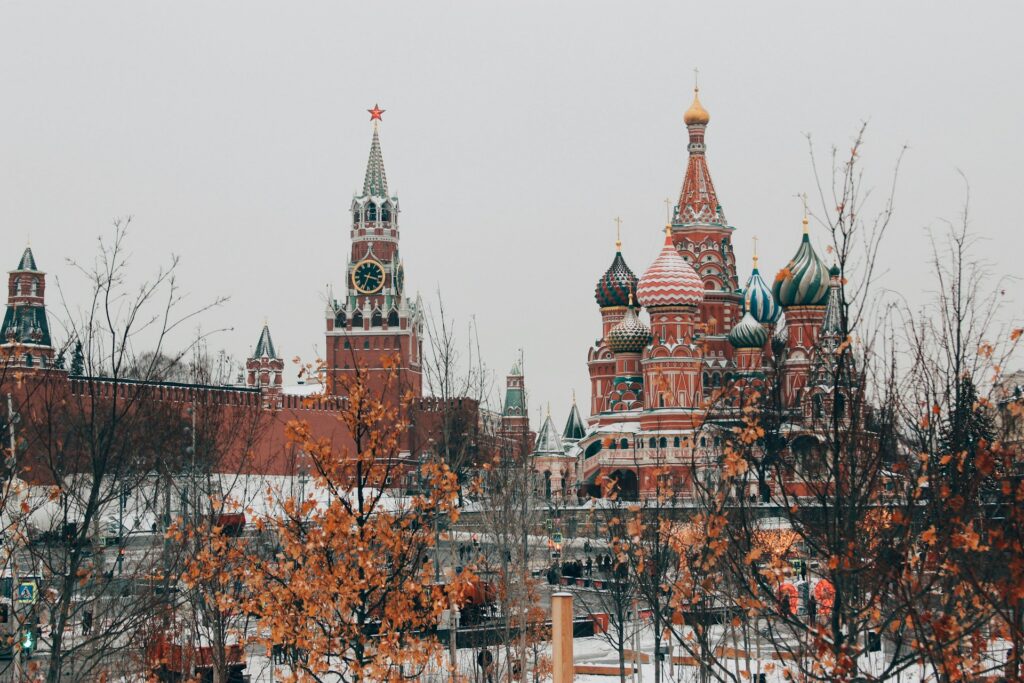In Finland, President Mauno Koivisto is remembered for his role in ending Finnish dependency on Russia, and taking Finland through the lama of the early 1990s and into the European Union. This was a transformational and eventually a successful period in Finnish history. Koivisto is also remembered on the other side of the Finnish Gulf. There, his legacy is perhaps more controversial.
After failing to comment on Baltic affairs for a long time, in January 1991 the President Mauno Koivisto made his views public, and quite bluntly so, as we will see below. The purpose of his intervention has remained obscure for a long time.
The Baltic perception at the time was that Koivisto was not supporting the Baltic independence movements but rather the stability of the Soviet Union. For some, Koivisto seemed to even tolerate Mikhail Gorbachev’s use of military force. The January 1991 episode has therefore stained Koivisto’s image in Estonia and has sometimes even hurt Finnish-Estonian relations.
The Baltic perception at the time was that Koivisto was not supporting the Baltic independence movements but rather the stability of the Soviet Union.
However, I will argue that Koivisto’s reputation has improved over time as knowledge of other aspects of his policy has transpired. Indeed, his image may improve even further if the intentions, and not only the content, of his pronouncements of January 1991 will be appreciated. Another factor that has probably influenced perceptions of Koivisto and Finland’s foreign policy is the degree to which Estonians have cared to remember Estonian own diplomacy in 1990-1991, something that I will try to make clear in the following essay.
In the first part, I will follow an obituary penned by Erkki Bahovski, a seasoned writer of international politics. This was one of the few longer commentaries devoted to Koivisto on his passing away in the Estonian press. It reflects well the general view of Koivisto that has formed over the past decades. I will also add some historical detail, so that the reader could understand the context.
In the second part, I will discuss later perceptions of the events and the shadow that Koivisto left on Estonian-Finnish relations.
The zero point in Estonian-Finnish relations
In his obituary, Bahovski focuses on January 1991, which naturally excites Estonians most. The context is that Koivisto had subordinated his Baltic policy to the primary goal of maintaining friendly relations with Gorbachev and the leadership of the USSR at the time. This was not a unique position; it was in tune for example with the line taken by the US President George H. W. Bush with whom Koivisto was conferring regularly.
The stability of the USSR trumped support for democratic national movements, including those in the Baltic Soviet republics. This policy was naturally resented by the nationalists.
Bahovski observes that the criticism of Koivisto’s line on the Baltic question, culminating in January 1991, was even stronger in the Finnish public than among the Baltic population. Koivisto’s Realpolitik applied to Estonia was probably too much even for the Finnish electorate accustomed to Finlandization throughout the Cold-War era. Bahovski refers to Koivisto’s announcements in January 1991 concerning Baltic affairs as the lowest point in Estonian-Finnish relations in recent time.
In January 1991 Koivisto decided to make two public statements and give interviews: on the 10th and on the 16th of January. On the first occasion, Koivisto said that Finland had sympathy for Baltic independence movements, but Baltic leaders should negotiate with Moscow on the basis of the Soviet constitution. Koivisto accused the Baltic governments for the failure of those negotiations.
Tallinn, Riga and Vilnius had repeatedly tried to launch negotiations, but they could not abandon the position that their countries had been illegally annexed.
This was not particularly fair, because Tallinn, Riga and Vilnius had repeatedly tried to launch those negotiations, but they could not abandon the position that their countries had been illegally annexed. Moscow, however, preferred to treat the three countries as having joined the USSR on their free will in 1940 and therefore had to secede from the Union.
Finland, maintaining the view that it had recognized annexation de facto, therefore lent support to Moscow’s point of view. (In August 1991, Helsinki would retract and recognize the Baltic states on the basis of state continuity and not as new countries.) Furthermore, Koivisto went on record by saying that he did not expect any violence to occur in the region.
Just three days later, on 13 January, fourteen people died in Vilnius as a result of an ill-conceived police operation by the Soviet military and special forces. On 16 January Koivisto said that violence was regrettable, but implied that he considered some Lithuanian “radicals” rather than Moscow to be the guilty party.
He denied having been naïve about Soviet intentions; expressed disappointment that the Balts had not followed Finnish advice and had provoked Moscow. Koivisto furthermore charged the press for giving Baltic matters excessive publicity. A few days later, more people died in Riga as a result of a shoot-out instigated by the Soviet police.
After reminding the readers of those controversial episodes, Bahovski continues on a more positive note. He says that after those events, Estonian-Finnish relations have only improved, “despite occasional differences over Nato and Russia”.
After finally recognizing Baltic independence, Koivisto was the first Western head of state to visit Estonia.
After finally recognizing Baltic independence, Koivisto was the first Western head of state to visit Estonia, in March 1992. Bahovski also argues that in spite of the coldness of Koivisto’s public posture, Finland was actually funneling large sums of money, and know-how, to Estonia under the cover of cultural co-operation.
Indeed, in this field the risk of jeopardizing bilateral relations with Moscow was much lower, as the Soviet Union had actually encouraged Finland to engage in direct relations with the Estonian SSR. It had been one of the goals of perestroika and the “new thinking” in Soviet foreign policy to expand the external relations of Soviet constituent republics. Of course, the USSR was fishing for economic gains at the same time as it was hoping that this would not destabilize Communist power.
Koivisto the Middleman
As is now known, Moscow had asked the Finnish government to support Estonian communists (Vaino Väljas, Indrek Toome, Mikk Titma et cetera) and persuade Estonian nationalists to be “sensible”. The Soviets apparently expected that Finnish support would prop up the waning popularity of the communist party in Estonia.
Koivisto agreed to play the Soviet game, but the strategy collapsed in spring 1990 when people voted communists from power. The new popular-front government led by Edgar Savisaar began to move toward independence. From this point onwards, the Finnish and Estonian points of view were essentially incompatible, and collisions unavoidable.
Concerning Koivisto’s pronouncements in January 1991, it is however still an open question to what extent Koivisto acted on a request from Moscow. According to the Finnish scholar Heikki Rausmaa, it is possible, but impossible to prove, that the President still tried to mediate between the Soviets and the Balts, hoping that his exhortations would discourage Baltic politicians from taking irresponsible actions.
Unfortunately, from the Baltic states’ point of view giving up their claims to independence was no longer an option, and Koivisto’s warnings were seen as encouragement to Gorbachev’s policy of military repression.
“Cultural” assistance
The backgrounds to these events have been well explained by Rausmaa, and recently also by Ilmar Metsalo. These studies have been introduced and read also in Estonia, and have no doubt helped correct the earlier somewhat one-sided interpretations of Helsinki’s policy. The extent of the Finnish help is now well known and appreciated.
The extent of the Finnish help is now well known and appreciated.
In August 2001, the Estonian President Lennart Meri opened a plaque in Helsinki commemorating his stay in the rooms of the Tuglas Society in the critical days of the August Coup, from 19 to 23 August 1991.
It was in those rooms that Meri held the famous press conference asserting that no one had ever seen generals milking cows, expecting the coup d’état to collapse. It was in those rooms that he typed letters to foreign governments requesting the recognition of Estonian independence.
All the facilities – office space and the considerable costs for the use of fax and telephone – were paid by the Finnish taxpayer. Koivisto was among the dignitaries helping attach the plaque to the wall, but refused to say a single word about the events of 1991.
This was typical of Koivisto. He had apparently decided not to explain his actions of 1991 and stuck to the decision obstinately for decades. For example, when Koivisto published Venäjän idea in 2001, the Estonian press noted the absence of any explanation for January 1991, which had made him an “extremely unpopular person.”
The press also referred to Koivisto’s words that when forced to choose between the US and Russia, he would choose Russia to be Finland’s neighbor: “Finland has not lived in a particularly bad place”.
It has later transpired that already in September 1991, right after Baltic independence, Koivisto had predicted that Estonians would never know the extent of Finnish help. He had noted stoically that no one was guarded against critique.
The President seemed to take unusual pleasure from being vilified by the public for not supporting Estonia strongly enough. Why he chose to do this has to my knowledge not been explained. Perhaps he thought that Finnish relations with Russia required absolute discretion even several decades after the event.
Changing perceptions of Finnish Realpolitik
The failure to explain the Finnish stance and to publicize the extent of the grass-root level support for the Estonian state-building processes has probably resulted in excessive scorn toward the Finnish mindset in Estonia. “According to our yardstick, Finnish foreign policy is extremely cynical,” noted a journalist in February 1996, and continued by declaring that Finland and Estonia located on the “opposite poles of the mental scales.”
While Finland pursued Realpolitik, Estonia relied on “international law, international treaties and co-operation,” the reporter claimed. This was a crude analysis of the Finnish diplomacy and a naïve interpretation of Estonia’s own approach in foreign affairs.
This was not necessarily the official point of view. Meri, or Arnold Rüütel for that matter, are not known to have publicly complained about Koivisto’s posture. Receiving the credentials of the first Finnish ambassador Jaakko Kaurinkoski on 1 October 1991, President Rüütel (officially Chairman of the Presidium of the Supreme Soviet) did not mention any past problems in Estonian-Finnish relations, but emphasized the “great practical assistance” that Estonia had received over the years.
Meri and Rüütel are not known to have publicly complained about Koivisto’s posture.
Leaving his position as the Estonian ambassador to Finland in October 1992 to take the position of the President, Meri also noted the expansion of cultural but also economic relations and Finnish assistance in the military realm.
For sure, Meri and Rüütel had reasons to be sympathetic. Before August 1991, both had repeatedly declared that they would take Finland as a model for developing relations with the Soviet Union. By the way, Latvian and Lithuanian politicians had done the same – something that is seldom remembered today.
For example, in November 1990 Meri told Kaurinkoski, an adviser at the Ulkoasiainministeriö, that Estonia wanted to learn from Finland “in many respects”. In a speech delivered in the same month in Helsinki, Meri noted: “Right now we need to learn from Paasikivi and Kekkonen. […] Finnish policy was not about black magic based on deception. It was about perceiving realities clearly and understanding tasks ahead.”
This speech is not remembered today. Because the Estonian, and also the Latvian and Lithuanian leaders had repeatedly announced their readiness to adopt Finlandization as the model to regulate their future relations with the USSR, there was obviously a great deal of empathy for the Finns who had done exactly that.
The paradigm of Finlandization was quickly abandoned after August 1991.
The paradigm of Finlandization was quickly abandoned after August 1991, when the Baltic states received their independence virtually deus ex machina, without Russia presenting preconditions.
Who is lecturing whom?
The sensitivity toward the Finnish experience and mentality in foreign politics, which I think we can observe by Meri and Rüütel, seemed to be lacking with Toomas Hendik Ilves, who succeeded Rüütel as president in 2006.
Although he had been following Estonian politics as a journalist for Radio Free Europe, apparently he had not understood, or chose to forget, the intricacies of the Estonian position before 1991. Although he had discussed Finnish foreign policy in less rigid terms before, in 2008 he produced a small storm by quoting Koivisto as saying that “Estonian independence was not in Finland’s interest”.
Unfortunately, Finnish media could not find the quote in the archives. Indeed, this was not an accurate reflection of Koivisto’s ideas. Koivisto probably thought that Estonian independence was very much in Finnish interest, but he doubted that Finland, Estonia, or any other country, could do much to achieve that independence.
Koivisto was greatly concerned about the Soviet Union collapsing into civil war and bloodshed, which would quash Baltic revolutions and pose a grave threat also to Finland.
He was greatly concerned about the Soviet Union collapsing into civil war and bloodshed, which would quash Baltic revolutions and pose a grave threat also to Finland. The purpose of his announcements of January 1991 was to warn the Balts of exactly those possibilities, and to discourage them from placing their hopes on the West. In this respect, Koivisto did what he did, thinking – in good faith – that this was the best for the Balts.
As Rausmaa has aptly noted, January 1991 was a rare occasion when Koivisto decided that the Balts needed some tutoring. Later on, he seems to have avoided the “big brother syndrome” that used to irritate Tallinn. For example, during his state visit in March 1992 he failed to say a single word about Estonian policies toward Russia or the Russian-speaking minorities, only claiming that each country chose its own path and hinting delicately that Finland’s experience with the eastern neighbor had been different.
When President Ilves accused Finland of offering unwanted advice, the recrimination seemed unjust. It was Ilves who, to my mind, sometimes took a donnish attitude toward the Finns, which did not go down well with the neighbors in the North who were apparently too polite to complain.
The petty bickering from Kadriorg, the seat of the president, cast an unpleasant shadow over Estonian-Finnish relations, but Kersti Kaljulaid, president since October 2016, has been successful in clearing those clouds of the past away.
At this point it is fitting to quote from Kaljulaid’s entry in Koivisto’s book of condolence: “A great statesman and a friend of Estonia has passed away. Estonian people remember Koivisto as a politician who valued cultural relations and human contacts between the two very close kindred nations”. This was the right thing to say, even considering the unpleasant events of January 1991.
Dr. Kaarel Piirimäe is a senior research fellow at the Estonian War Museum and a research fellow at the University of Tartu. Since 2014 he has also been a senior researcher for the Finnish research project “Reimagining Futures in the European North at the End of the Cold War”.
Sources for this essay also include material from Postimees, The archives of the Ministry for Foreign Affairs of Finland, Estonian Foreign Ministry archive and PhD thesis “Aligning with the unipole: alliance policies of Estonia, Latvia and Lithuania, 1988-1998” by Edijs Boss, University of Cambridge, 2010.
This essay is part of a series of articles concerning Mauno Koivisto and the turn of the 1990s.





